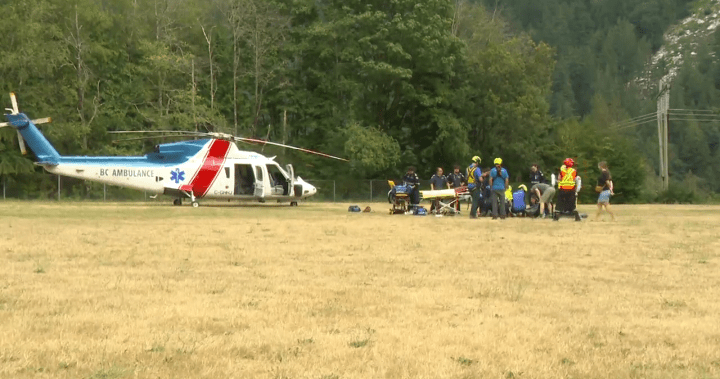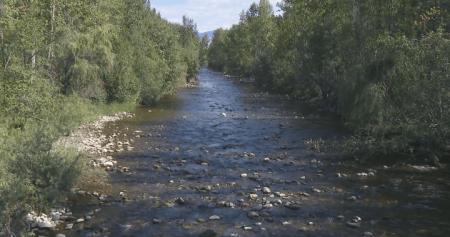Two climbers in Squamish, B.C., were seriously injured in a rockfall while climbing a route known as “liquid gold” on the Bulletheads section of the Stawamus Chief. This incident prompted a rescue operation by Squamish Search and Rescue, who noted that the male climber fell 40 feet after a rock he was holding onto broke away, while the female climber had her leg crushed by the falling rock. The technical nature of the rescue, which involved the use of a BC Wildfire service helicopter, was compounded by the risk of further rockfalls in the area.
The climbers were roped up and anchored to the wall at the time of the accident, adding complexity to the rescue operation. The situation was deemed challenging due to the location on the sheer face of the Stawamus Chief and the ongoing hazard of rockfall in the area. Despite these obstacles, the search-and-rescue crews successfully airlifted the injured climbers to Squamish and then transported them to the hospital by air ambulance. The severity of their injuries and the nature of the accident underscored the dangers of rock climbing, especially in such rugged terrain.
Squamish Search and Rescue search manager Mike Teske highlighted the technical expertise required for such rescues and the inherent risks of operating in hazardous environments like the Bulletheads section of the Stawamus Chief. The specialized skills of the search-and-rescue teams, coupled with the assistance of BC Wildfire service helicopters, were instrumental in ensuring the safe retrieval of the injured climbers. The coordinated response to this incident exemplified the dedication and professionalism of the rescue teams in handling emergency situations in challenging locations.
The rockfall incident serves as a reminder of the unpredictable dangers that climbers face in the mountainous terrain of the Stawamus Chief and the importance of safety precautions while engaging in outdoor activities. The steep cliffs and rocky outcrops of the area can pose significant risks to climbers, especially when natural elements like falling rocks come into play. The need for expertise, equipment, and careful planning in rescue operations is crucial to mitigating these risks and ensuring the well-being of those involved in such incidents.
The climbers who were injured in the rockfall on the Stawamus Chief were fortunate to receive prompt assistance from search-and-rescue crews and helicopter services, which played a vital role in their rescue and evacuation to the hospital. The incident serves as a testament to the dedication and skill of these emergency responders, who put their own safety at risk to help others in distress. The cooperation and coordination between various agencies involved in the rescue operation contributed to the successful outcome of this challenging mission.
In conclusion, the rockfall incident on the Stawamus Chief in Squamish, B.C., underscores the need for caution and preparedness when engaging in outdoor activities in rugged terrain. The risks associated with climbing in such environments, including the potential for rockfalls and other natural hazards, highlight the importance of safety measures and emergency response capabilities. The successful rescue of the injured climbers by Squamish Search and Rescue and other agencies demonstrates the commitment and expertise of those involved in managing crisis situations in challenging landscapes.













